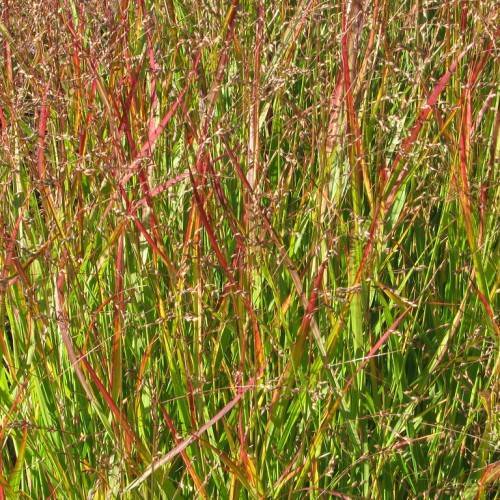
switch grass
Panicum virgatum 'Shenandoah'
Cycle:
Perennial
Watering:
Frequent
Hardiness Zone:
5 - 9
Flowers:
Flowers In Summer
Sun:
Full sun
Soil:
Humus rich, Rocky , gravelly , dry, Well-drained
Fruits:
Fruits In Autumn Ready In Fall
Leaf:
Yes
Growth Rate:
High
Maintenance:
Low
Drought Tolerant:
Yes
Salt Tolerant:
Yes
Care Level:
Medium
watering
Switch Grass (Panicum virgatum 'Shenandoah') should be watered 2-3 times a week for 15-25 minutes each time, depending on factors such as the season and the airdryness. The soil should remain moderately moist and the plant should not be allowed to dry out completely. During the summer months, more frequent watering may be needed if the plant is planted in direct sunlight or if environmental temperatures exceed 80 degrees. In the fall, reduce the frequency of watering as the temperatures drop, and water only when the top 2 inches of soil feels dry. During the winter months, water once every 2 weeks, and only if the top 2 inches of soil feel dry. With all watering, rainwater is always preferred but regular tap water is okay. Lastly, always check the drainage of your container before watering to ensure that it is not getting soggy and accumulating standing water, as this could cause root rot.
sunlight
Switch grass (Panicum virgatum 'Shenandoah') requires full sun and at least 6-8 hours of direct sun each day. This perennial grass thrives in hot, sunny locations with moist, rich soil. With proper care, it can tolerate some drought and temporary dry spells. It is best planted in early- to mid-spring in the northern regions or in late winter in the southern region. It is also important to keep this grass away from large trees, as too much shade can cause the grass to become weak and produce less foliage.
pruning
Switch grass (Panicum virgatum 'Shenandoah') should be pruned between late winter and early spring. Plants should be cut back to 6-12 inches in height. Dead and/or damaged leaves and stems should be removed to promote healthy new growth.
